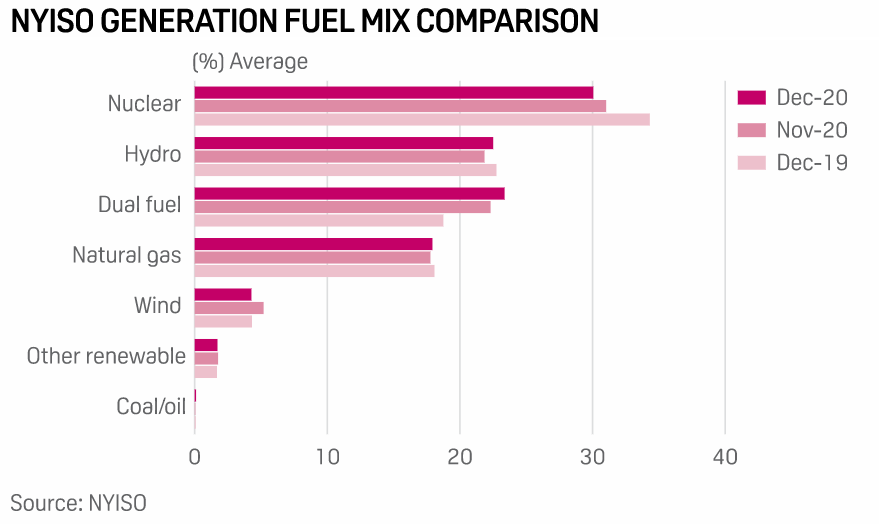New York City's largest power generator, Rise Light & Power, is developing a 1,200-MW transmission project to bring in-state wind and solar power into the city, as part of its plan to be a major New York State renewable energy investor.
Formerly called Ravenswood Generating, which is the Queens, New York-based subsidiary of LS Power that owns and operates the Ravenswood Generating Station, the company said Jan. 14 it is rebranding as Rise Light & Power.
"Our view is that the New York City metropolitan area is a fundamentally important part of the country that has unique challenges accessing renewable energy and our company will focus on getting renewable energy to New York City while investing in other clean energy projects," Clint Plummer, CEO of Rise Light & Power said in a Jan. 15 phone call.
The first of these projects will be the Catskills Renewable Connector, a planned 1,200 MW submarine and underground transmission project that will "unlock the potential for new wind and solar energy from across upstate New York to reach customers downstate," according to a statement.
At full capacity, the proposed transmission line is expected to supply up to approximately 15% of New York City's electricity needs, the company said.
The line would run from Albany down under and along the Hudson River and local waterways into the site in the Long Island City neighborhood of Queens.
Development details
The project is in a "very early stage," Plummer said, although a couple core aspects have been locked down, like real estate in Queens next to the Ravenswood Generating Station that can be used for the electric converter station associated with the transmission line.
The company is still considering options for the location of the Albany side of the transmission line, Plummer said. Rise has mapped a couple alternative routes that go under the Hudson and a couple overland routes.
For the most part, the objective is to avoid disturbing existing communities, so the line would be built in existing rights of way like public roads and railroads, he said.
Last summer the company did preliminary survey work and will do more detailed survey work this year ahead of submitting a permit request under Article 7 with the New York State Public Service Commission, Plummer said, adding that these projects take time and once the company has the right route options and public support it will submit the Article 7 and other permit applications.
Article 7 is a state permitting process that is the transmission equivalent to Article 10 which applies to generation projects.

Rise expects to submit its permit applications in about a year and then expects it will take 18 to 24 months to go through permitting. Construction will likely take about two years, so Plummer estimated the project's in-service date would be in 2026.
The renewable energy resources that would supply the project would be eligible for the New York State Energy Research and Development Authority's Tier 1 renewable energy credit program and could also participate in NYSERDA's newly established Tier 4 REC program for renewables directly delivered into New York City, he said.
"We consider this project as a competitor to the Champlain Hudson Power Express transmission project," Plummer said.
Champlain Hudson is a 1,000- to 1,250-MW transmission line that would run 333 miles from the Canadian border into New York City delivering electricity from Hydro-Québec's hydropower system. Transmission Developers Inc. -- owned by private equity firm Blackstone – is developing the project, which could start commercial operation in 2025.
In a related note, the 1,200-MW New England Clean Energy Connect transmission project, that will also be supplied with hydropower from Hydro-Québec, received the Presidential Permit from the US Department of Energy on Jan. 15.
The NECEC project being developed by Avangrid has begun construction, according to a statement. It will supply power to the ISO New England grid with a connection point in Lewiston, Maine.